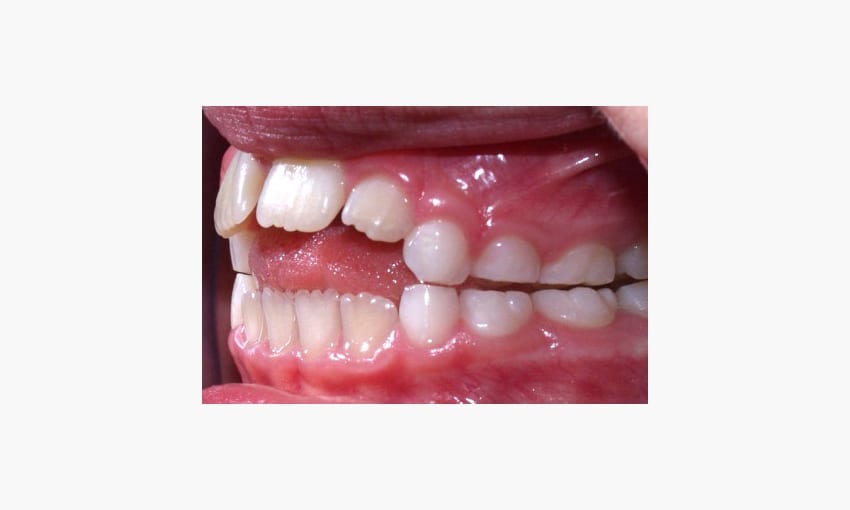Parafunction means abnormal function.
Parafunction includes activities such as thumb sucking, finger sucking, tongue thrusting or object sucking (e.g. a dummy). It is described as unusual habits or activities relating to the oral cavity (mouth) that have the potential to dramatically affect the direction of growth and development that can permanently affect one’s lifelong appearance and ability to function normally.
Thumb sucking:
In the case of extended thumb sucking or tongue thrusting, the developmental affects occur symmetrically and usually relate to the front teeth slowly being pulled forward of their normal position with the upper front teeth lifting away from their normal ‘bite’ contact (occlusion) with the lower front teeth.
If this persists, usually any time after the age of 3-4 years, the affects will slowly get worse and result in increasingly deformed development and appearance. The front teeth will not meet together, and the patient cannot incise (bite together). This can result in an inability to masticate (chew) effectively on the front teeth.
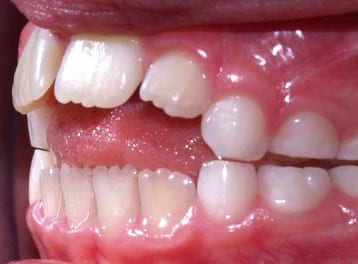
1 – Thumb sucking
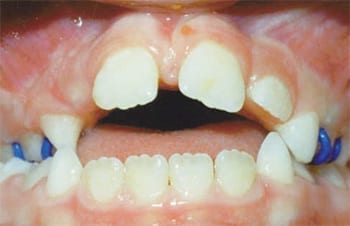
2 – Thumb sucking
Tongue thrusting:
Whilst it is easier to assist a child in stopping thumb sucking, although usually achieved with some psychological disturbance, tongue thrusting on swallowing is a more difficult reflex activity that requires more direct intervention.
A human being swallows about 2000 times every day1 and if this equals the number of times the tongue thrusts forward as part of this parafunctional activity, you get an idea of the dimension of the orthodontic force that is applied to the front of the mouth that is forcing the teeth open.
Consequently, these patients can end up with what is called an ‘anterior open bite’, which the tongue thrusts through on reflex every time the patient swallows. This parafunction will not only lead to the inability to chew or bite normally because the teeth do not meet at the front of the mouth, but also is often associated with speech impediments relating to the inability to make certain essential vocal or speech sound.

3 – Anterior open bite
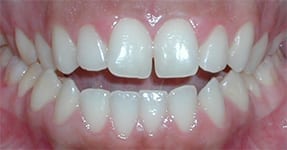
4 – Anterior open bite
Video: Open Bite
Video: Tongue thrusting
One-sided sucking or chewing:
An even more concerning parafunction relates to object sucking or chewing, usually on one side only; or finger sucking, again one side only. This can often lead to a large gap between the upper and lower teeth on the offending side.
Even worse, a ‘crossbite’ can occur, which is where the lower teeth actually bite on the outside of the upper teeth. When this occurs on one side of a developing child and it is untreated, the complete symmetry of the developing face becomes distorted with the chin moving towards the offending side. Once this has developed, simple orthopaedics and orthodontics will not rectify the situation and the patient requires orthognathic surgery to correct the facial asymmetry.
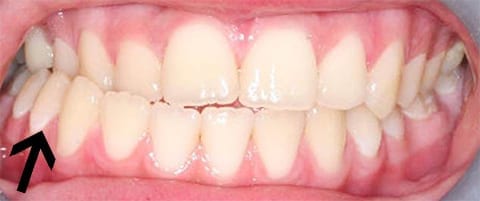
5 – Crossbite
Video: Crossbite
If you see any of these signs or symptoms in your young child, it is important that they are identified and treated early to prevent the risk of permanent deformity of the lower third of the face and reduced ability for normal function (e.g. chew and speak).
References:
Footnotes:
1. Medical: Elsevier Health Services: Craniofacial pain: Neuromusculoskeletal Assessment, Treatment and Management, Harry J.M. von Piekartz (2007) pg. 306.
Photo sources:
1: http://moderndentistry.com.au/perch/resources/thumbsucking-.jpg
2: http://www.redmondmolloy.ie/Portals/73112/images/C–Documents%20and%20Settings-Surgery4-My%20Documents-My%20Pictures-anterior%20open%20bite.jpg
3: http://petalumabraces.com/wp-content/uploads/2009/11/open-bite.jpg
4: http://www.201braces.com/photo/class3anterior-before.jpg
5: http://mcdonoughortho.com/wp-content/uploads/2013/07/crossbite.jpg

